History
Astypalaia has travelled through time with the same name. Small, trivial changes have portrayed her as "Astoopalia", "Astropalia", and "Stipalia".
According to Greek mythology, Astypalaia and Europe were the daughters of Finikos and Perimidis. From the union of Astypalaia and Poseidon, god of the water, the Argonaut, Agaeos was born and so was first settled by the Kares who named her "Pyra" for the red colour of her soil. Because of her many fragrant flowers and her fruit, the Ancient Greek called her "the God's Bank".
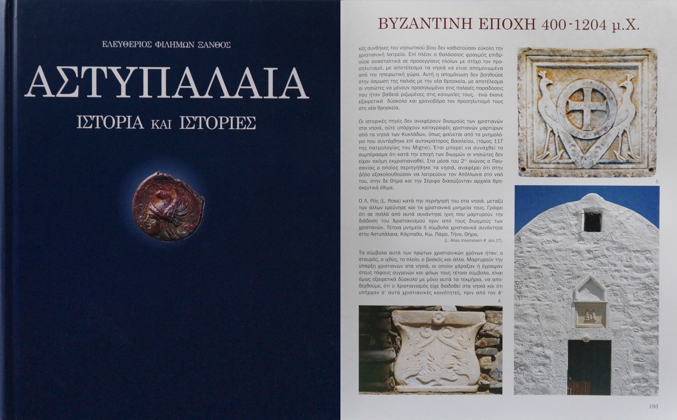
 "Astypalaia - History and stories" - a book
by Lefteris Xanthos
"Astypalaia - History and stories" - a book
by Lefteris Xanthos
Astypalaia has gone through the Occupation of Crete, the Minoan Era and later on became Greek because of settlers who came from Megara.
During the ancient years, the island must have shown a significant climax as can be witnessed by the various findings, mainly coins which were found during excavations and from the frequent references in texts of ancient writers. The findings are on display at the Archaeological Museum which is open to the public at Pera Yalos and where the visitor can begin to understand the life of Astypalaia.
During the Hellenistic Era, it was a port (a station of Ptolemy of Egypt) and during the Roman Period, it showed a great development owed to its abundant, natural ports which resulted in starting points against the pirates. During the Byzantine Ages, the escalation of piratism brought about changes to the architectural structure and location of the houses of the island, such as the decline of the coastal
dwellings and the movement of the population within the constructed walls of the castle for protection. This era marks the construction of the Castle of Agios Ioannis, situated on the southwestern coast of Astypalaia, whose remains can be found up to today.
The Romans, who appreciated each country's food most of all, called Astypalaia "fish-bearing" because of the great amount and high quality of fish the island has.
However, the period with the most significant mark, the Castle, which has survived up to our days, is that of the Venetian Conquest after the destruction of the Byzantine Empire by the Franks in 1204, and after the creation of Doukatos of Naxos, Markos Sanouthos, the Venetian founder, conceded Astypalaia to the nobleman, John Querini, also of Venetian descent. He was the founder and its first owner of the lodging which consisted of the center of today's settlement. The Venetian stayed in Astypalaia from 1207 to 1269 during the time which the Byzantine ruled. However, in 1310, John Querini the second, governor of Tinos and Mykonos and the descendant of John Querini the first, conquered Astypalaia again with the help of Markos Grimanis. The Querini family remained the rulers of the island for about 300 years.
Each in his rules, renovated and added to the Castle. Stone plaques with the family emblem of the Venetian nobility who built and dwelt in the Castle.
They are built into various points of the walls and stand memory to their splendor of long ago. One of these plaques has survived up to our days and is built in a part of the Castle where it can be admired by the visitor.
It was placed there in March 1413, the day which was dedicated to their patron Saint Querini, John Querini the fourth, "Count of Astypalaia" and his wife Isabetta. The Venetians lost Astypalaia in 1537 when Barbarosa the terrible, took over the islands.
During Turkish rule, Astypalaia had reserved privileges and so she remained self-governed. Astypalaia took part in the Greek Revolution of 1821, but, like the rest Dodecanese, she was not included in the provisions of the free Greek Nation. She remained under Turkish Rule until 1912 when the Italian rule followed.
Along with the Dodecanesian islands, she was finally united to the rest of Greece on the 7th of March 1948.
Astypalaia has travelled through time with the same name. Small, trivial changes have portrayed her as "Astoopalia", "Astropalia", and "Stipalia".
According to Greek mythology, Astypalaia and Europe were the daughters of Finikos and Perimidis. From the union of Astypalaia and Poseidon, god of the water, the Argonaut, Agaeos was born and so was first settled by the Kares who named her "Pyra" for the red colour of her soil. Because of her many fragrant flowers and her fruit, the Ancient Greek called her "the God's Bank".

Astypalaia has gone through the Occupation of Crete, the Minoan Era and later on became Greek because of settlers who came from Megara.
During the ancient years, the island must have shown a significant climax as can be witnessed by the various findings, mainly coins which were found during excavations and from the frequent references in texts of ancient writers. The findings are on display at the Archaeological Museum which is open to the public at Pera Yalos and where the visitor can begin to understand the life of Astypalaia.
During the Hellenistic Era, it was a port (a station of Ptolemy of Egypt) and during the Roman Period, it showed a great development owed to its abundant, natural ports which resulted in starting points against the pirates. During the Byzantine Ages, the escalation of piratism brought about changes to the architectural structure and location of the houses of the island, such as the decline of the coastal
dwellings and the movement of the population within the constructed walls of the castle for protection. This era marks the construction of the Castle of Agios Ioannis, situated on the southwestern coast of Astypalaia, whose remains can be found up to today.
The Romans, who appreciated each country's food most of all, called Astypalaia "fish-bearing" because of the great amount and high quality of fish the island has.
However, the period with the most significant mark, the Castle, which has survived up to our days, is that of the Venetian Conquest after the destruction of the Byzantine Empire by the Franks in 1204, and after the creation of Doukatos of Naxos, Markos Sanouthos, the Venetian founder, conceded Astypalaia to the nobleman, John Querini, also of Venetian descent. He was the founder and its first owner of the lodging which consisted of the center of today's settlement. The Venetian stayed in Astypalaia from 1207 to 1269 during the time which the Byzantine ruled. However, in 1310, John Querini the second, governor of Tinos and Mykonos and the descendant of John Querini the first, conquered Astypalaia again with the help of Markos Grimanis. The Querini family remained the rulers of the island for about 300 years.
Each in his rules, renovated and added to the Castle. Stone plaques with the family emblem of the Venetian nobility who built and dwelt in the Castle.
They are built into various points of the walls and stand memory to their splendor of long ago. One of these plaques has survived up to our days and is built in a part of the Castle where it can be admired by the visitor.
It was placed there in March 1413, the day which was dedicated to their patron Saint Querini, John Querini the fourth, "Count of Astypalaia" and his wife Isabetta. The Venetians lost Astypalaia in 1537 when Barbarosa the terrible, took over the islands.
During Turkish rule, Astypalaia had reserved privileges and so she remained self-governed. Astypalaia took part in the Greek Revolution of 1821, but, like the rest Dodecanese, she was not included in the provisions of the free Greek Nation. She remained under Turkish Rule until 1912 when the Italian rule followed.
Along with the Dodecanesian islands, she was finally united to the rest of Greece on the 7th of March 1948.
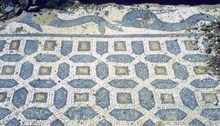
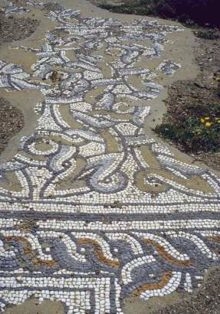
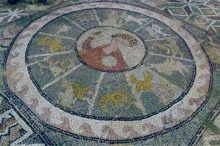
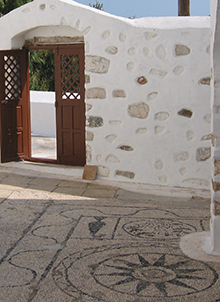
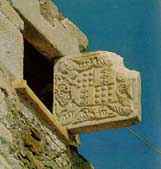
© 1997-2025 Wydra Grafik Design | Impact
|
Data protection
|
"Astypalaia - History and Stories" - by Lefteris Xanthos
